Starting a Small Business
There are approximately 540,000 businesses started each month, and there are more than 28 million small businesses in the United States.
Unfortunately, not all become successful. In fact, only a small portion survive their first two-years in business. Why is this you ask, there are many factors, some has to do with planning. Most new owners don’t plan well, they just jump right in without a plan or funds to back them. They love the idea of being their own boss and doing something they love. They forget about what it takes it takes to run the business and succeed.
I was one of those people. I jumped right in and I made tons of mistakes along the way. I realized that if I would have planned well before I started, it would have saved me some headaches and perhaps I would have achieved success sooner.
I would like to pass on some steps that might help reduce the mistakes and perhaps get you faster to success. Hopefully my mistakes will benefit you!
Step 1: Take the time to Research
You have probably come up with a good business idea, so now it is time to do a reality check. Do you think your idea will succeed? Is there a need? Will there be competitors? If there are competitors, does your business have a niche that will outshine the competition?
In order for a small business to succeed, it has to fill a need, solve a problem or provide something the market wants.
There are a number of ways you can identify this need, including searching online for the products/services you are trying to offer, check groups on social sites like Facebook and more.
As you explore the market, some of the questions you should answer include:
- Is there a need for your anticipated products/services?
- Who needs it?
- Are there other companies offering similar products/services now?
- What is the competition like?
- How will your business fit into the market?
Step 2: Make a Business Plan
Making a business plan is a necessity for starting a business. Please take the time to do this, you will thank me for it later. This will identify all your start-up items, expenses, your plans for growth and is a must-have for all new business.
If you want to get loans/grants for your business, this will be one of the requirements.
Do some research online, you can find examples of business plans online for different types of businesses. You might find one that you can tailor to your business without starting from scratch. This will also help make sure that you have all the items in the plan that you will need if you intend to seek financial support.
If you have the money to support your venture, you will need at least a basic plan that you can update at you go.
Step 3: Budget
I recommend creating a budget. Budgets are hard to create at first because you must anticipate your revenue and expenses, but if you create one you will have more understanding of what to expect, especially expenses. You can create a simple spreadsheet (or I have included an example of one, Budget Example)
You will need to include estimates of one-time start-up costs (licenses, permits, legal fees, insurance, equipment, furniture, computer equipment, inventory, marketing, advertising, rent/lease, office supplies, website costs, salaries. This should be for 12 months of income and expenses.
Those numbers combined is the initial investment you will need.
Now that you have a rough number in mind, there are a number of ways you can fund your small business, including:
- Small business loans
- Grants
- SBA Loans
- Financing
- Crowdfunding
- Loans from Business Investors
- Loans from Friends
Step 4: Choose a Business Structure
Your small business can be a sole proprietorship, a partnership, a limited liability company (LLC) or a corporation. The business entity you choose will impact many factors from your business name, to your liability, to how you file your taxes.
You may choose an initial business structure, and then reevaluate and change your structure as your business grows and needs change.
Depending on the complexity of your business, it may be worth investing in a consultation from an Enrolled Agent, Attorney or CPA to ensure you are making the right structure choice for your business.
Some Definitions are…
Sole Proprietorship
A sole proprietorship also referred to as a sole trader or a proprietorship, is an unincorporated business that has just one owner who pays personal income tax on profits earned from the business.
A sole proprietorship is the easiest type of business to establish or take apart, due to a lack of government regulation. As such, sole proprietorship’s are very popular among individual self-contractors, consultants or small business owners. Many sole proprietors do business under their own names because creating a separate business or trade name isn’t necessary.
Corporation
A corporation is a legal entity that is separate and distinct from its owners. Corporations enjoy most of the rights and responsibilities that an individual possesses: enter contracts, loan and borrow money, sue and be sued, hire employees, own assets and pay taxes. Some refer to it as a “legal person.” They are also double taxed.
S-Corporation
A Sub-chapter S (S Corporation) is a form of corporation that meets specific Internal Revenue Code requirements. The requirements give a corporation with 100 shareholders or fewer the benefit of incorporation while being taxed as a partnership. The corporation may pass income directly to shareholders and avoid double taxation. Requirements include being a domestic corporation, not having more than 100 shareholders, which includes only eligible shareholders, and having only one class of stock.
Limited Liability Corporation
A limited liability company (LLC) is a corporate structure in the United States whereby the owners are not personally liable for the company’s debts or liabilities. Limited liability companies are hybrid entities that combine the characteristics of a corporation with those of a partnership or sole proprietorship.
While the limited liability feature is similar to that of a corporation, the availability of flow-through taxation to the members of an LLC is a feature of partnerships.
Step 5: Choose a Good Name and Register
I want to say this first! Whatever name you choose you will have it for a long time unless you want to pay to have it changed. Choose wisely!
Consider everything when choosing a name, how will it look on stationary, websites. Will it attract people, does it explain your business…?
Once the name is picked, you need to make sure no one else has it or its not trademarked.
Then, you will need to register it. A sole proprietor must register their business name with either their state or county clerk. Corporations, LLCs, or limited partnerships typically register their business name with their Secretary of State. You will also need an EIN# for your business.
If you are going to have a website (I HIGHLY RECOMMEND HAVING ONE) Don’t forget to register your domain name once you have selected your business name. If the exact name is already taken, try some variation of what you want.
There are several good sites for domain name and website creation. Some are Go Daddy, Blue Host and many more. Watch for pricing and make sure your hosting plan gives you what you need to do your business.
Step 6: Get Licenses and Permits
Paperwork is a part of the process when you start your own business.
There are a variety of small business licenses and permits that may apply to your situation, depending on the type of business you are starting and where you are located. You will need to research what licenses and permits apply to your business during the start-up process.
Step 7: Choose Your Accounting System
Small businesses run most effectively when there are systems in place. One of the most important systems for a small business is an accounting system.
Your accounting system is very important in order to create and manager your budget, create invoices to customers, track jobs, set you rates, track expenses and help give you a financial statement to give to your Tax Preparer.
You can set up your accounting system yourself or hire a bookkeeper or accountant to take away some of the guesswork. If you decide to get started on your own, make sure you consider these questions that are vital when choosing accounting software.
What will it need to accomplish, is it cost effective, will it grow with my company and can I access the data when and where I need it.
I personally use Quick Books Online because I can work from the office or from home. There are also a number of cloud-based software’s available for us. Zero is another good one.
Step 8: The Location of your Business
Setting up your place of business is important for the operation of your business, whether you will have a home office, a shared or private office space, or a retail location.
You will need to consider how much space you will need to run your business, so location is important. You will need to think about equipment you will need, furniture space, computer space and if you are going to have workers. You will need what will work best for your business. You will also need to think about if you need to lease or buy commercial space.
Step 9: How you will start
If you are going to need workers, its best to get started sooner rather than later. The process of hiring takes time. You will need to make sure you have signed up for payroll tax accounts such as Federal and State withholding and unemployment accounts. You will need to have hiring forms, screening applicants etc.
The Small Business Administration has an excellent guide to hiring your first employee that is useful for new small business owners.
If you are not hiring employees, but instead outsourcing work to independent contractors, now is the time to work with an attorney to get your independent contractor agreement in place and start your search.
Lastly, if you are a true solopreneur hitting the small business road alone, you may not need employees or contractors, but you will still need your own support team. This team can be comprised of a mentor, small business coach, or even your family, and serves as your go-to resource for advice, motivation and reassurance when the road gets bumpy.
Step 10: Promote Your Small Business
Once your business is up and running, you need to start attracting clients and customers. Start with networking, tell everyone you know about your new business and what you have to offer. Then you need to create a good marketing strategy and plan. The internet has a ton of great advice and ideas on how to market and advertise your business.
Once you have completed these business start-up activities, you will have all of the most important bases covered. Keep in mind that success doesn’t happen overnight. But use the plan you’ve created to consistently work on your business, and you will increase your chances of success.
Here are some books I recommend (don’t get offended – I read them all the time. They are well written and explain in detail for anyone to understand)
- Small Business for Dummies
- Accounting for Dummies
- Bookkeeping for Dummies
- Recruiting and Retaining Employees for Dummies
- Business Plan for Dummies
You will also need to research what are deductible items for your business, records keeping etc.







